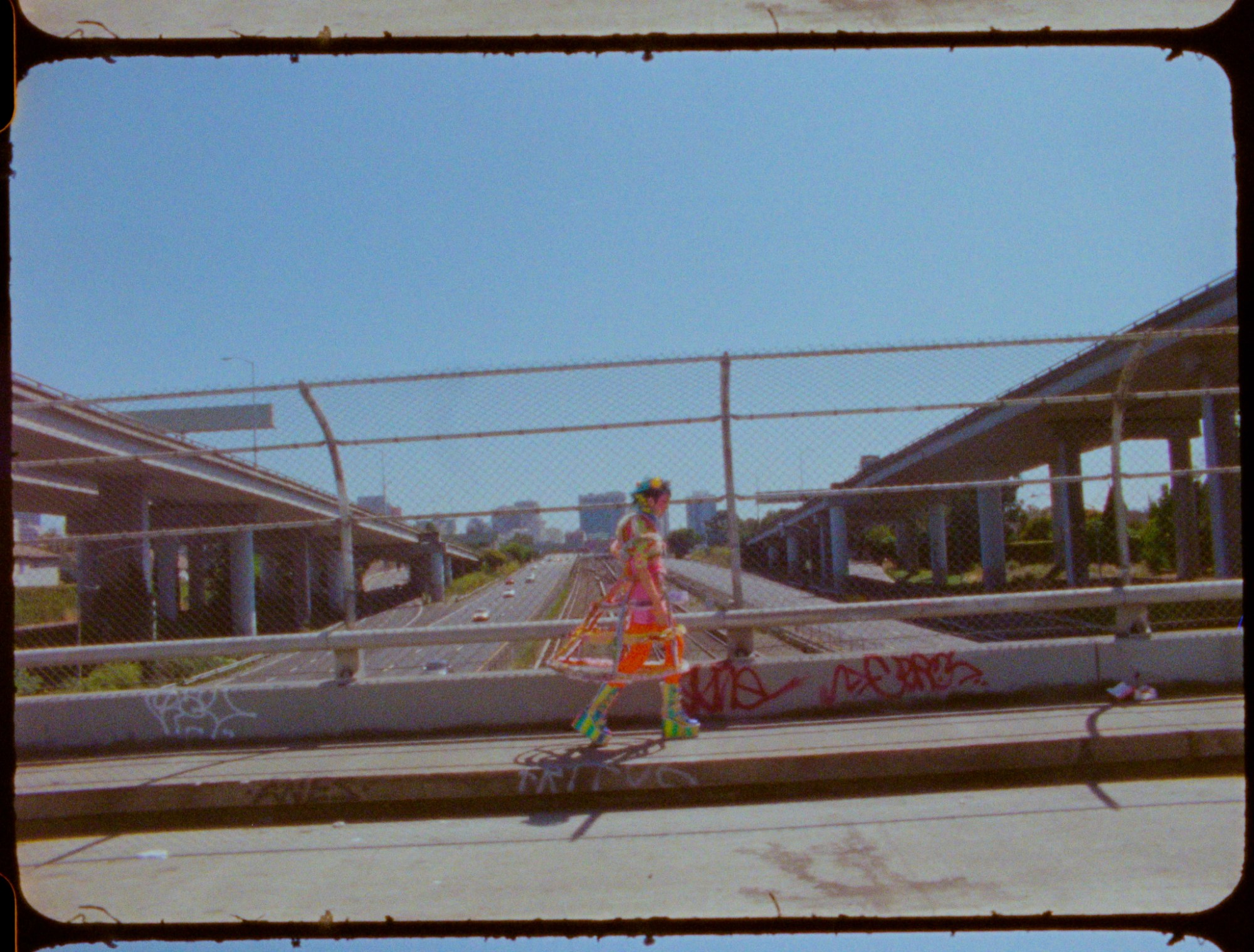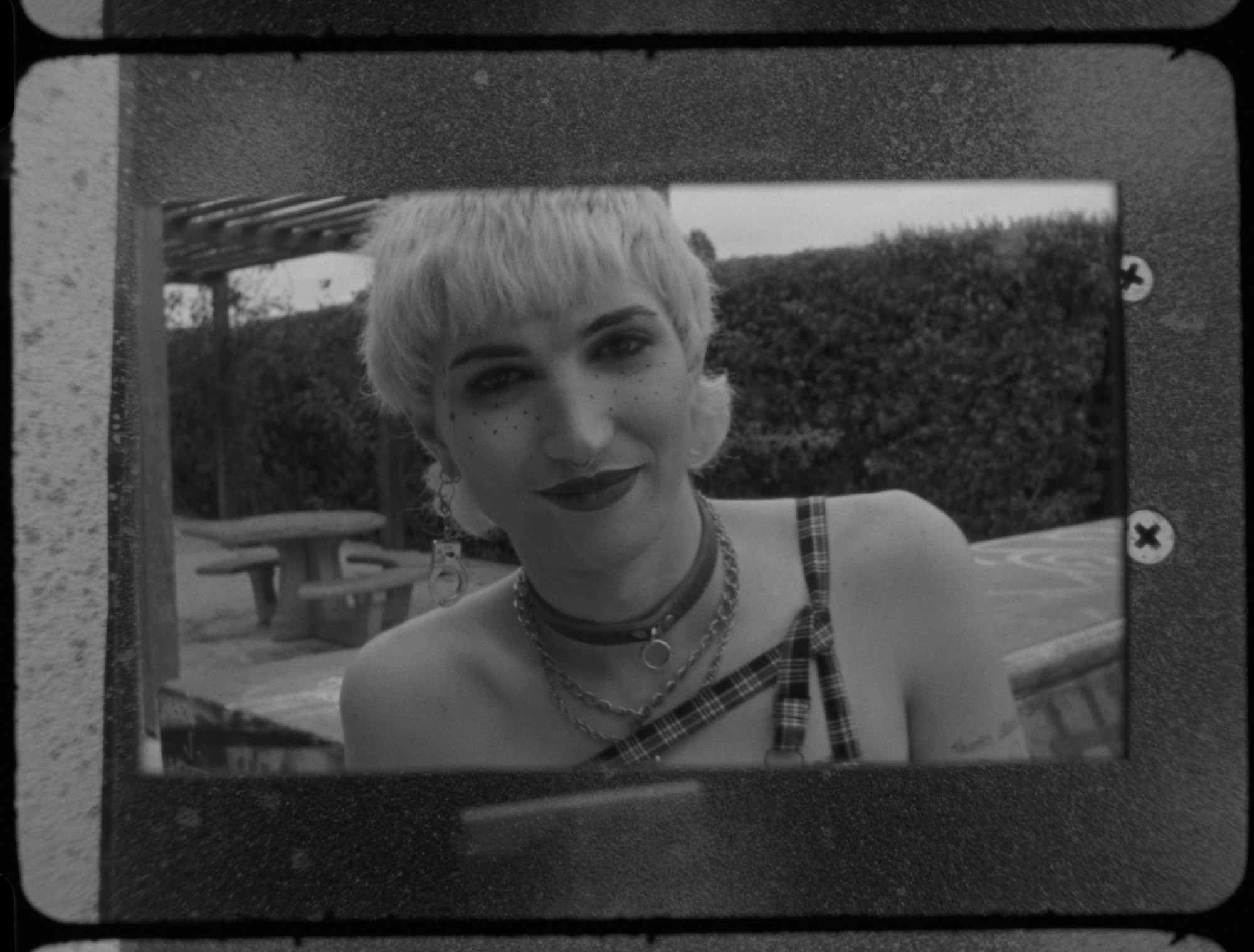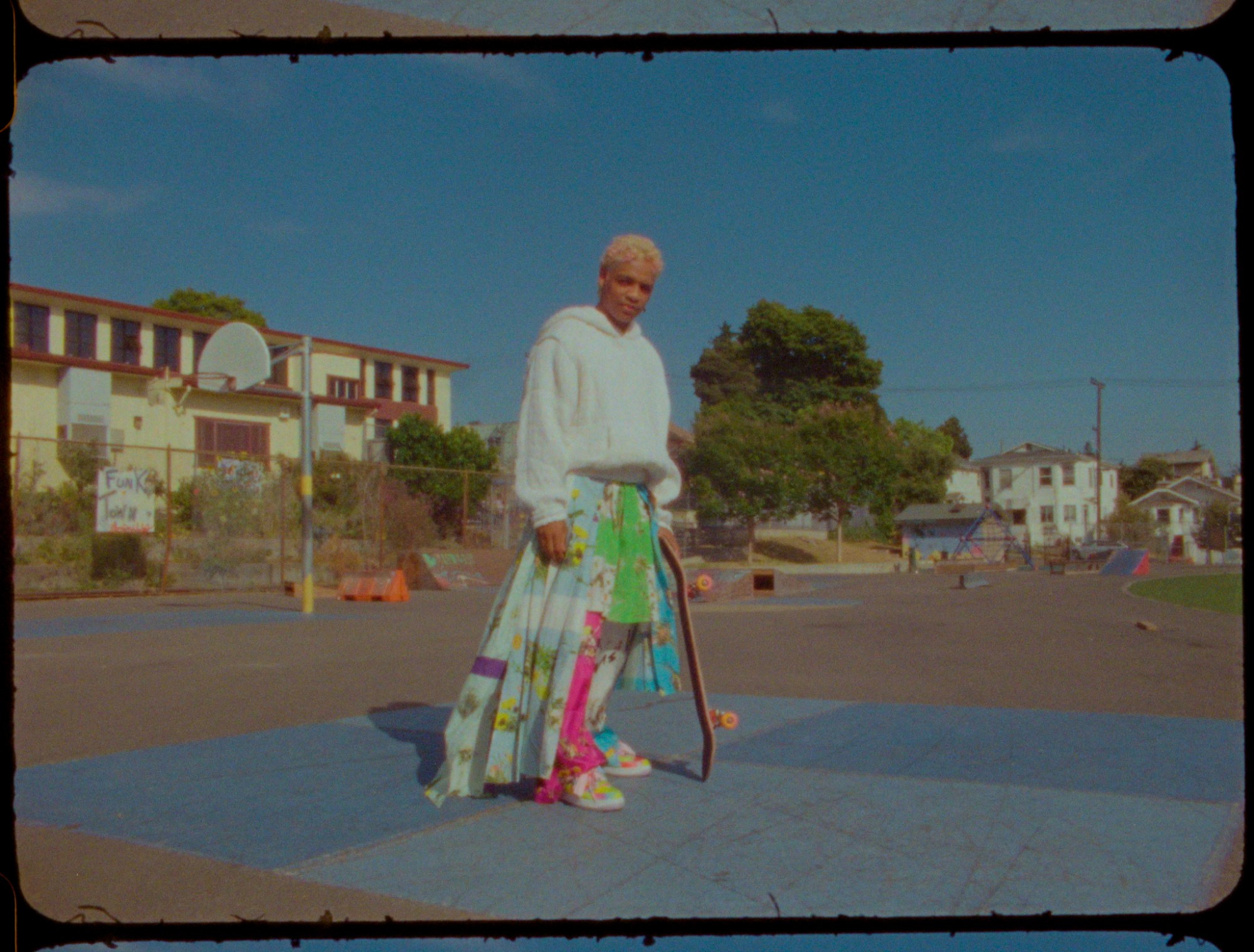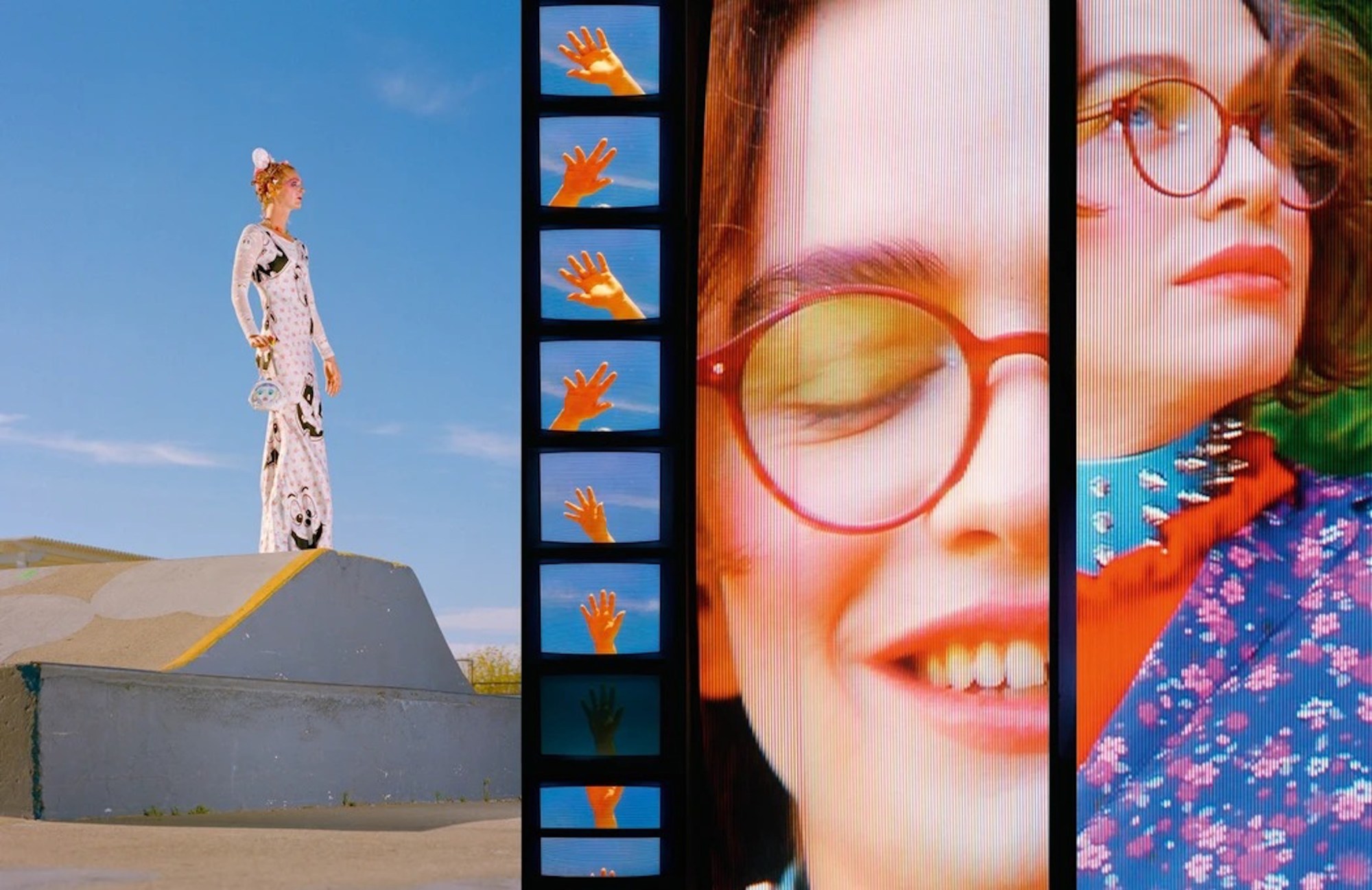Lana Jay Lackey and Tyler Kohlhoff have made it their mission to document spirited outsiders and punk kids across America in the riotous pages of Sedition Magazine, a DIY fashion, culture and photography publication they started in 2016. The pair, who grew up in Portland, Oregon, are creative and romantic partners — Lana is a stylist and creative director, while Tyler works in film and photography — and the visuals that they dream up together are vibrant and erratic in the best way possible, instantly recognizable in their collage-like style. Last summer, while on a road trip from San Diego to Portland, they met up with the most inspiring crew of queer skaters in Oakland that they styled and photographed for i-D’s The Get Up Stand Up Issue.
“Lana saw some wild looking kid doing skate tricks in Pleasers, like cheap stripper heels, and she was like ‘this is amazing,’” Tyler says. Obviously, they just had to meet them. i-D too were intrigued, not only by their unique sense of style, but the way these skateboarders are carving out their own space in the San Francisco Bay Area skating scene, which isn’t exactly the most inclusive. To accompany the feature in i-D, Tyler made a series of mini documentaries profiling a few of the skaters, Cher Autumn Straub, Kane Caples, Mae Ross and Triss McGowan. In the videos, they discuss their experience skating in Oakland and what identity, gender and sex, mean to them. We caught up with Tyler to hear all about making the videos, which can be found below.

What is it that initially attracted you to this group of skaters in Oakland?
Our mission is to find punk, iconoclastic crews of kids and to document them, so we started looking into who these people might be and where they might be, and we found all of these kids in Oakland that looked like no other skateboarder we’d ever seen. When I think of a skateboarder, I think of Dickies, Vans and like a XXXL tee or something. These kids didn’t look like that at all. Initially, it was just this visual attraction, when you see somebody dressing in a way that you’ve never seen before, you have some urge to document it. We got to know the kids more and found out that they’re on the bleeding edge of sexuality, gender, being trans and changing their identities.
As a straight guy from the suburbs, I’d never thought about how transitioning would affect your ability to skate and do sports. When we were talking to Cher, she was like, “I don’t think I ever thought of this either”. These kids are really punk too. Oakland is one of the last bastions of punk rock in America, where kids are still living in punk houses that have been passed down through generations. They can figure out a way to sell art, make clothes, be self-sufficient and do DIY stuff. They don’t need anybody; they don’t have anything they need to prove. They don’t necessarily look like crust punks. They’re like sex punks or something.

Did you plan on making documentary style videos from the start or did that happen after hearing their stories?
Well, a lot of my photos are video stills. I’m always shooting video and I love shooting video. We were initially just trying to film some cool skate tricks in weird clothing and I started asking them questions. I wasn’t really trying to get into talking about gender norms, I was just asking them like, “What do you think is hot? What’s hot to you?” [“Gay shit!” Triss says] And it just opened up all of these conversations. I knew that I wanted to make a video that was a window into this punk ass crew, and it went from there. I was just trying to learn from them.
And these are the topics that came up naturally.
Yeah, I wanted to make these little profiles of the four skaters that we spent the most time with. There’s something sweet about it. Some of them realize that they have a platform and some of them are coy about it, but I think their mission, generally, is to put themselves out there and share their story so that the next generation of kids who might be going through the same stuff can learn, be more prepared, or just know that [not fitting in is] normal.
They’re also just really rad skaters. I was on a shoot with Leo [Baker] and Brian [Anderson]; Leo was on the US Women’s Olympic Skating team and bailed because they were like, “Well, I’m not a girl anymore.” And he was asked who he was most inspired by and he said Cher. Leo is one of the most popular skaters in the world. So, these kids are inspiring people on all levels to just be themselves and skate for themselves.

The way that they talk about identity, gender and sexuality in the videos is so real and goes far beyond any preconceived norms.
Last summer, Lana and I did a lot of projects with younger kids in their early 20s. We did a road trip from San Diego to Portland. The Oakland stop was halfway on our trip and we’d been talking to all of these recent high school grads about their relationships and sexuality. It just seems like the generation after us is so much more well-adjusted and understands sexuality so much better than we did, which was so interesting. The way kids are talking about open relationships, with multiple partners, and sex as this thing that doesn’t have to have tons of crazy baggage, it almost felt like there was some sort of sexual revolution that these kids were on the bleeding edge of. We’re thinking we want to make a doc about it. We wanted to make these docs about these kids in Oakland, but it seems like they’re part of this even bigger story about sexuality in America.
One of the things that I love about these videos is how you combine elements of repetition and collage. What’s your process like?
I film everything and then I play it all back and film it again on different tv screens, so I just spend so much time looking at it. [My style] is just really chaotic, honestly. I’ll love some random detail like an eyeball or a hand, and I’ll just start collaging it. I’m just exploring. It’s not too precious, making collages and making a bunch of them. Then I’ll just pick a few to put in the video. I love grids. Since I’m really frenetic and kind of chaotic, a grid gives me something to push against and for me that’s really helpful. I’m always going back and moving things around.
You mentioned that these videos felt very in line with your own personal style of filmmaking.
Yeah, we’re all DIY together. I’m from Portland, which isn’t very far from Oakland and we share a lot of the same aesthetics. I moved to New York and it’s a different beast over here, but I’m into frenetic, crunchy, punk things. I feel like I’ve found myself in this project. I found my style.

